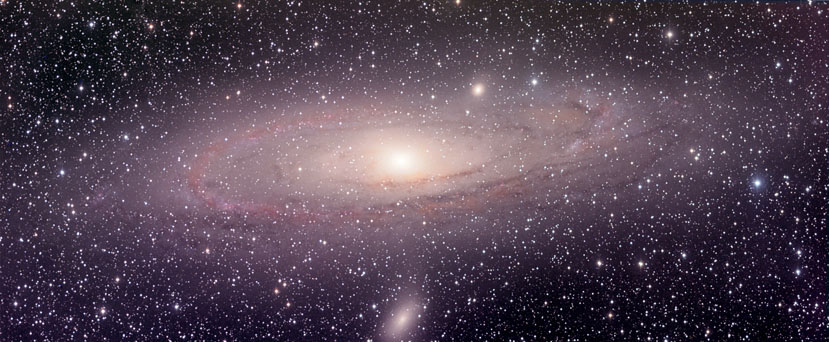
M31 is known as the "Great Galaxy", M31 at magnitude 4.5 is a naked eye object visible as an elongated smudge in the night time sky. At 2.5 million light years, M31 is the closest galaxy to our own. Similar in size and shape to our galaxy, M31 and our galaxy are on a collision course that will catastrophically disrupt both galaxies in 10s of millions of years in the future.
Note the areas of red/blue in the outer parts of the galaxy, these are areas containing star forming regions and are rich in new stars. In 1920, Edwin Hubble, using the then largest telescope, the 100 inch Hooker at Mt. Wilson was able to identify Cepheid variable stars in this galaxy and to measure the distance to the galaxy. Prior to Hubbles observation, controversy was rift among astronomers as to whether or not the galaxies observed were part of our own galaxy or separate 'Islands in the Sky'.
M31 contains massive black holes in the double core.